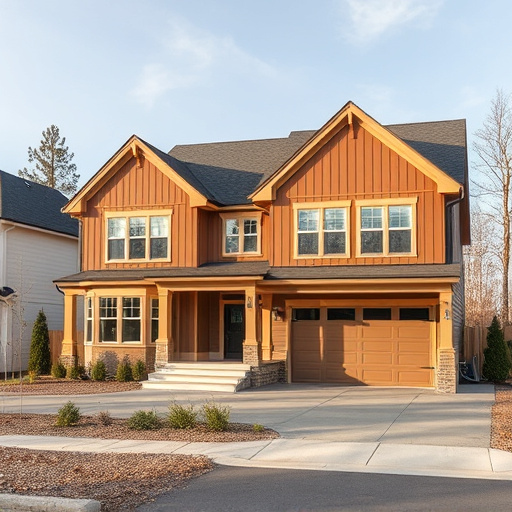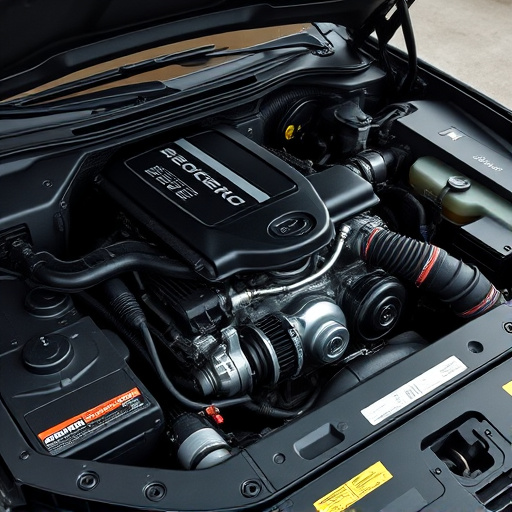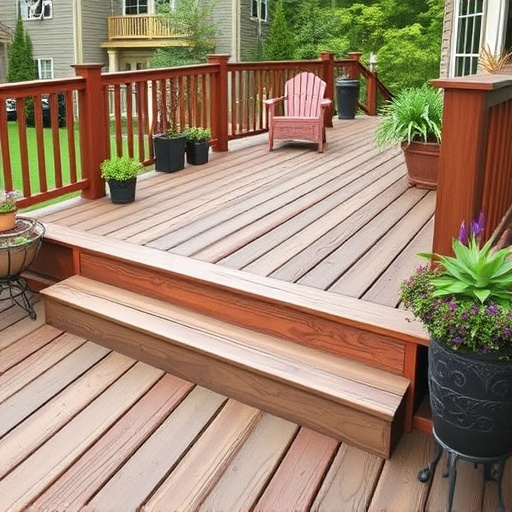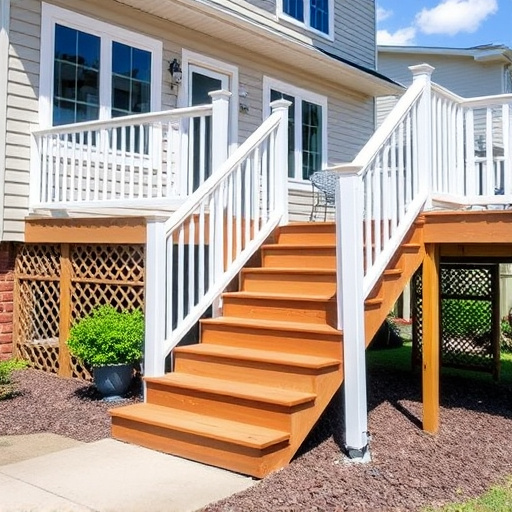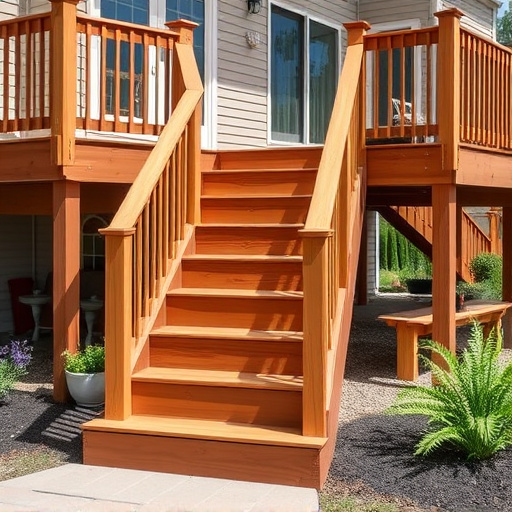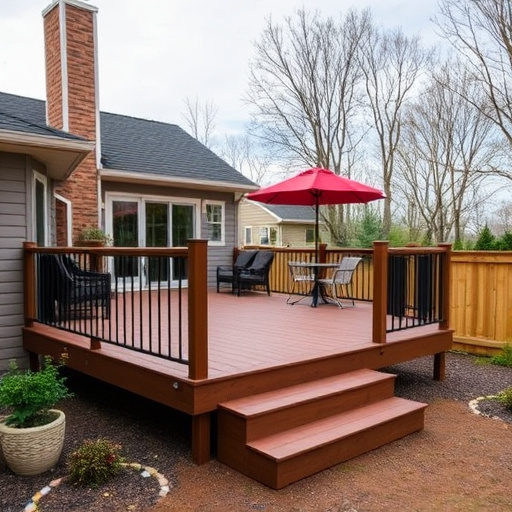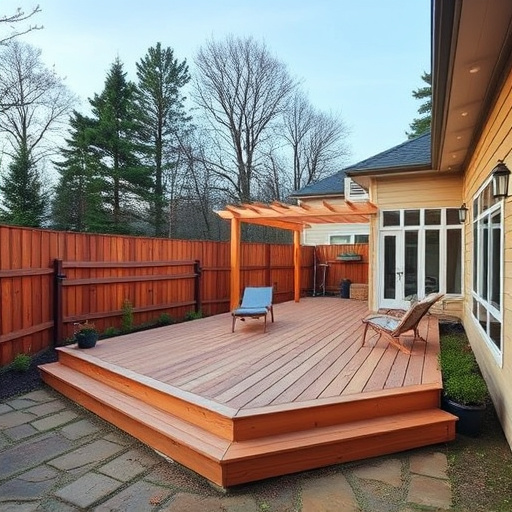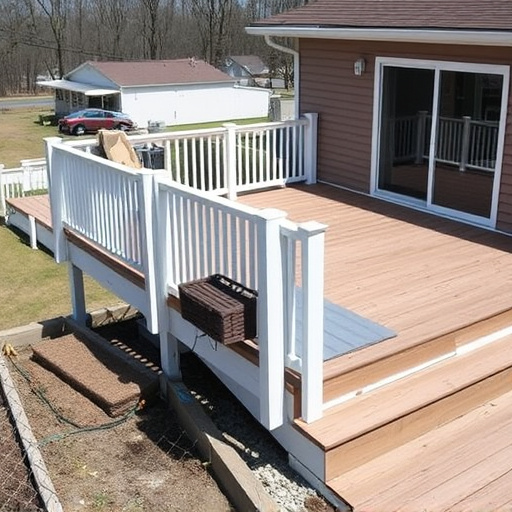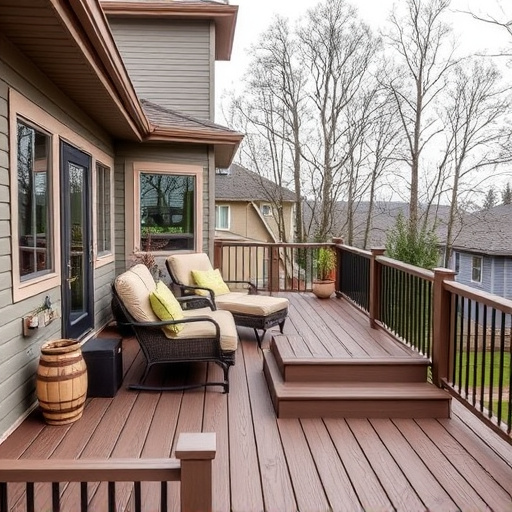Regular deck maintenance is vital for structural integrity and safety. Inspect for cracks, rot, soft spots, and sagging, addressing these issues promptly to prevent costly repairs. Material deterioration like fading, splitting, or peeling requires immediate action to maintain decking quality and avoid tripping hazards from loose rails or uneven surfaces. Regular safety inspections are key to ensuring deck safety and stability.
Is your deck showing signs of distress? Immediate attention is crucial for maintaining safety and preserving the structural integrity of this outdoor oasis. This article guides you through the key indicators that your deck requires prompt maintenance or repair, focusing on structural damage, decking material deterioration, and safety hazards. By recognizing these signs, you’ll be better equipped to ensure a sturdy, inviting, and secure space for years to come, enhancing your deck maintenance efforts.
- Structural Damage: Cracks, Rot, and Weakened Spans
- Decking Material Deterioration: Fading, Splitting, or Peeling
- Safety Hazards: Loose Rails, Missing Boards, and Uneven Surfaces
Structural Damage: Cracks, Rot, and Weakened Spans

If your deck is showing signs of structural damage, it’s a clear indication that deck maintenance or repair is long overdue. Cracks in the wood surface are often the first visual cues, but the real concern lies beneath. These cracks can indicate weakened structural elements, particularly in older decks. Rot, a common issue, not only compromises the aesthetics but also poses significant safety hazards. You might notice soft spots or areas where the deck feels unusually loose, indicating rotten timbers that need immediate attention.
Spans, the supporting beams connecting individual sections of your deck, can also weaken over time. This weakness often manifests as uneven or sagging areas, particularly if there has been previous water damage from faulty siding and gutters or roofing repairs. Regular inspection is crucial to identify these issues early. Prompt action on structural damages not only ensures the safety of users but also prevents further deterioration, thus saving you from costly siding and gutters repairs or roof repair in the future.
Decking Material Deterioration: Fading, Splitting, or Peeling
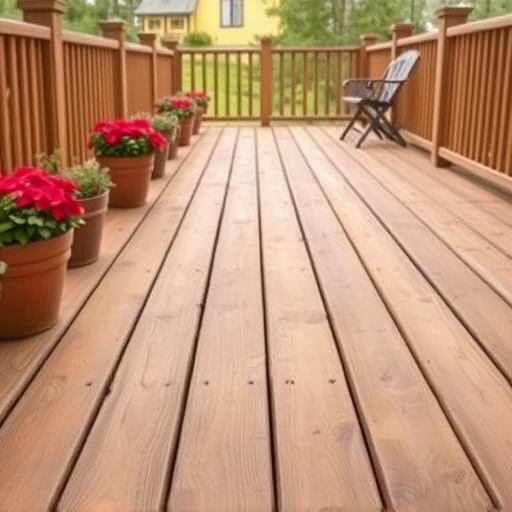
If your deck is showing signs of material deterioration such as fading, splitting, or peeling, it’s a clear indication that immediate action is required. These issues often point to damage caused by prolonged exposure to weather conditions like sun, rain, and snow, which can weaken the integrity of wood, composite, or vinyl decking materials over time. Fading may occur due to UV radiation from the sun, causing the colors to dim and the surface to lose its vibrancy. Splitting and peeling are typically a result of water seepage, leading to rot and structural instability.
Regular deck maintenance includes inspecting your decking materials for any signs of wear and tear. For commercial roofing and siding, or residential properties alike, addressing these issues promptly is crucial to prevent further damage that could impact the overall structural integrity of the deck, not to mention the additional costs associated with extensive repairs or replacements down the line. A roof consulting expert can provide valuable insights into effective deck maintenance strategies tailored to specific decking materials.
Safety Hazards: Loose Rails, Missing Boards, and Uneven Surfaces
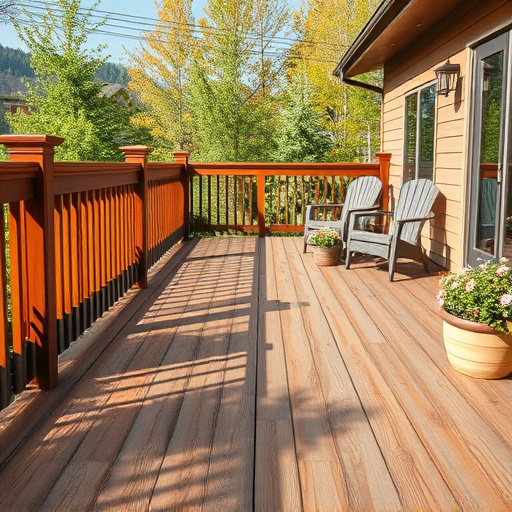
One of the most critical aspects of deck maintenance is ensuring your safety. Regularly inspect your deck for any signs of wear and tear that could pose a risk to you or your family. One of the first indicators that immediate attention is required is loose rails. If the metal connections between the deck boards and supports have come undone, it not only compromises the structural integrity but also creates a serious tripping hazard.
Similarly, missing boards or uneven surfaces can be dangerous. Over time, wood deteriorates, rots, or warps, leading to gaps in the deck’s surface. These spaces can trap clothing or limbs, causing falls. Moreover, uneven decking may indicate a larger structural issue that requires professional attention from a residential siding or commercial roofing expert, especially if it involves the foundation or support beams.
If your deck exhibits any of the signs discussed—structural damage, deterioration of decking materials, or safety hazards—it’s crucial to address them promptly. Regular deck maintenance is key to preventing major repairs and ensuring a safe space for enjoyment. Don’t let minor issues turn into significant problems; take action now to preserve and protect your outdoor oasis.



